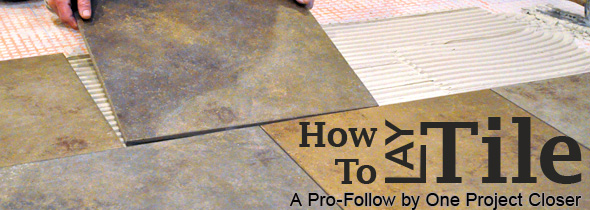Imagine this: you’re finally tackling that outdated bathroom renovation, eager to replace the cracked tiles with something fresh and modern. You’ve picked out stunning new tiles, a beautiful grout color, and even the perfect shower head. But then you notice a problem – the floor is uneven, a slight dip that’s been lurking beneath the old tiles for years. Could you use tile mortar to level the floor and fix this problem, or do you need a different solution?

Image: mromavolley.com
Leveling an uneven floor is a crucial step in any tile installation, ensuring a smooth, professional finish and preventing tiles from cracking or becoming loose over time. But can tile mortar, the material specifically designed for securing tiles, also be used for leveling? The answer, like many things in home improvement, is a bit more complex than a simple yes or no. Let’s unpack the intricacies of using tile mortar for leveling and explore when it’s the right choice, and when you might need to consider alternative solutions.
Understanding Tile Mortar and its Purpose
Tile mortar, often referred to as thinset mortar, is a specialized adhesive designed for bonding tiles to a substrate. It contains a mixture of cement, sand, and polymers, creating a strong and durable bond that can withstand the weight and movement of tiles over time. While tile mortar offers strong adhesive properties, it’s not inherently designed for leveling large, uneven areas. Think of it as the glue that holds your tiles in place, not a substance for reshaping the entire floor’s surface.
The Limitations of Tile Mortar
While tile mortar can be used for minor leveling if the unevenness is minimal, it struggles to effectively address significant discrepancies. Here’s why:
- Limited Strength for Leveling: Tile mortar’s primary function is adhesion, not leveling. It lacks the structural integrity to effectively fill large gaps or create a completely flat surface. Using it for extensive leveling risks cracks and unevenness, ultimately leading to problems with your tile installation.
- Increased Thickness and Cracks: If you try to use tile mortar to fill significant dips, the thickness of the mortar layer will increase, making it prone to cracking and warping, especially under the weight of tiles. This can compromise the integrity of your tile installation and lead to costly repairs down the line.
- Reduced Adhesion and Tile Stability: Mortar designed for thin layers, when applied too thick, can weaken its adhesive properties, making it less effective in holding tiles securely in place. This can result in loose tiles, a wobbly floor, and potential safety hazards.
When to Consider Tile Mortar for Leveling
There are situations where using tile mortar for minor leveling may be appropriate, but be cautious:
- Small and Minor Imperfections: If you have only slight unevenness, like a few bumps or dips on the order of 1/4 inch or less, tile mortar can be an option. The key is to ensure the unevenness is minimal and the overall surface is relatively flat.
- Use with Caution: Always apply tile mortar in thin layers, no thicker than 1/4 inch. Never rely on it for significant leveling or to correct large, dramatic slopes.
When to Opt for Alternatives
For uneven floors requiring a more robust leveling solution, it’s best to consider alternatives like:
- Self-Leveling Concrete: This specialized concrete mixture is specifically designed for leveling floors. It flows easily to even out dips and create a smooth, flat surface. Self-leveling concrete offers the structural integrity and strength required for larger leveling projects.
- Backer Board and Thin-Set Mortar: Consider using a cement board or plywood backer board as a foundation over the uneven floor. Attach the backer board securely to the original floor, and then use a thin layer of tile mortar to finalize the leveling process.
Expert Tips for Effective Leveling
Whether you choose tile mortar for minor leveling or opt for another solution, here are expert tips to ensure a successful outcome:
- Preparation is Key: Before embarking on any leveling project, thoroughly clean the floor surface, removing any dirt, debris, or loose materials that could interfere with adhesion.
- Proper Mixing: Always follow the manufacturer’s instructions for mixing tile mortar. Consistency plays a crucial role in achieving the desired level of strength and adhesion.
- Patience is a Virtue: Allow the leveling compound to cure completely according to the manufacturer’s guidelines before adding tiles. This ensures that the floor is properly set and stable before you install your tiles.

Image: highshower.com
Can You Use Tile Mortar To Level A Floor
Summary: Making Informed Choices for a Smooth and Beautiful Tile Installation
While tile mortar can be a helpful tool for minor leveling, remember that it’s not designed for significant floor transformations. For large or pronounced unevenness, opt for a more specialized leveling solution like self-leveling concrete or a combination of backer board and thin-set mortar. By understanding the limitations of tile mortar and choosing the appropriate leveling technique, you can ensure a secure and aesthetically pleasing tile installation that will stand the test of time.






